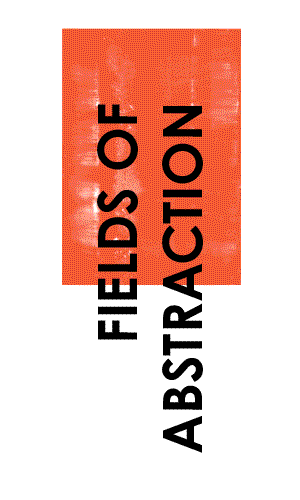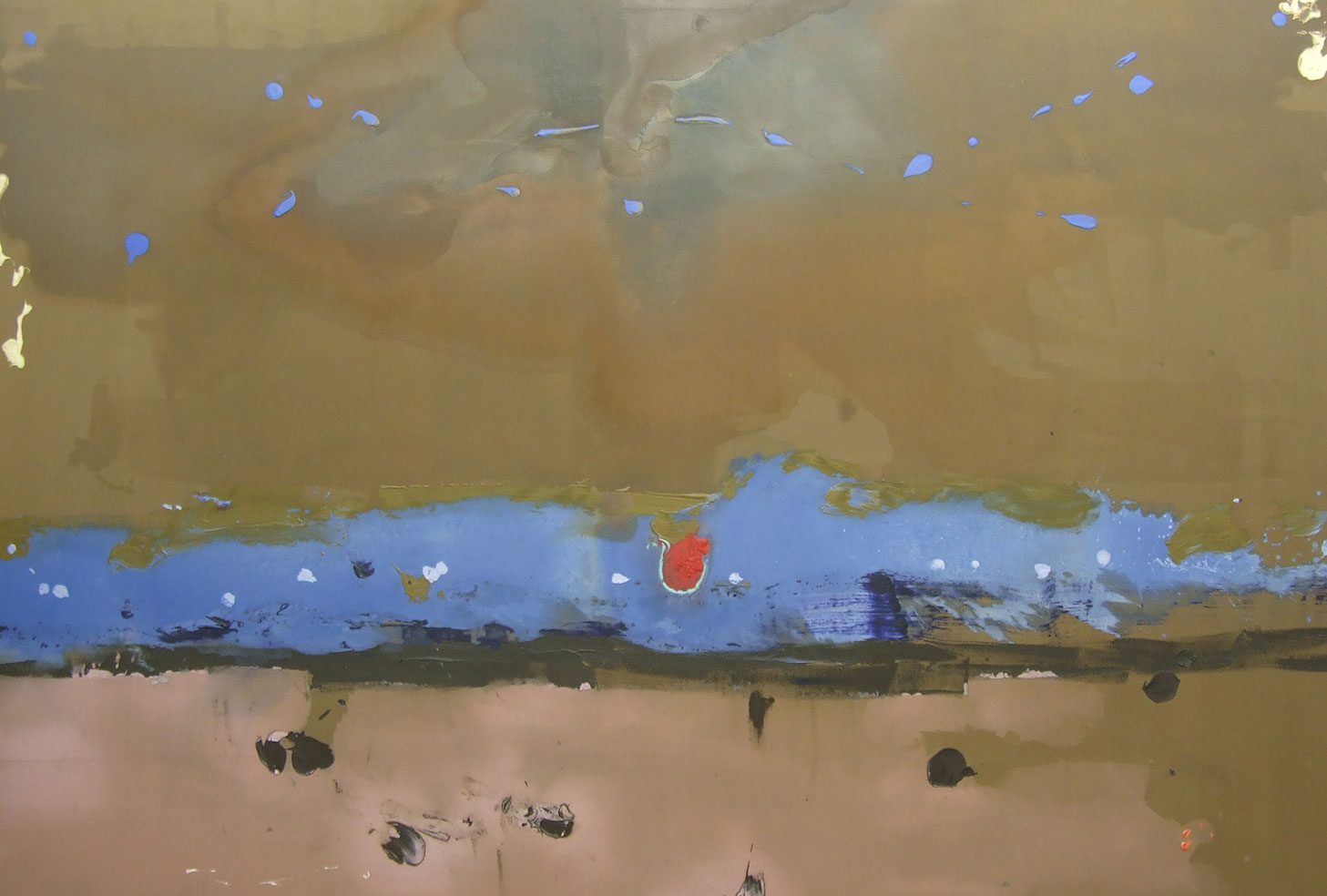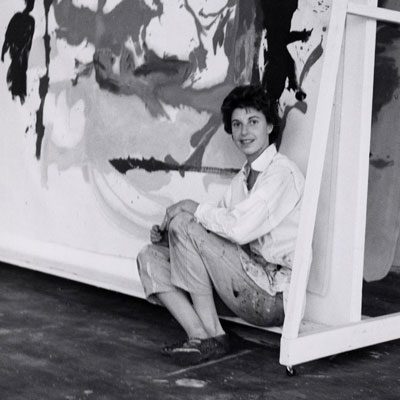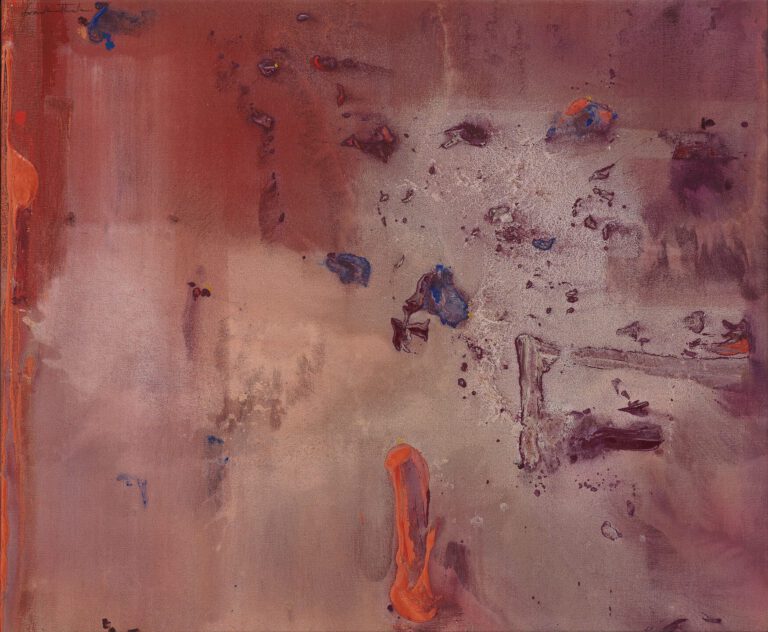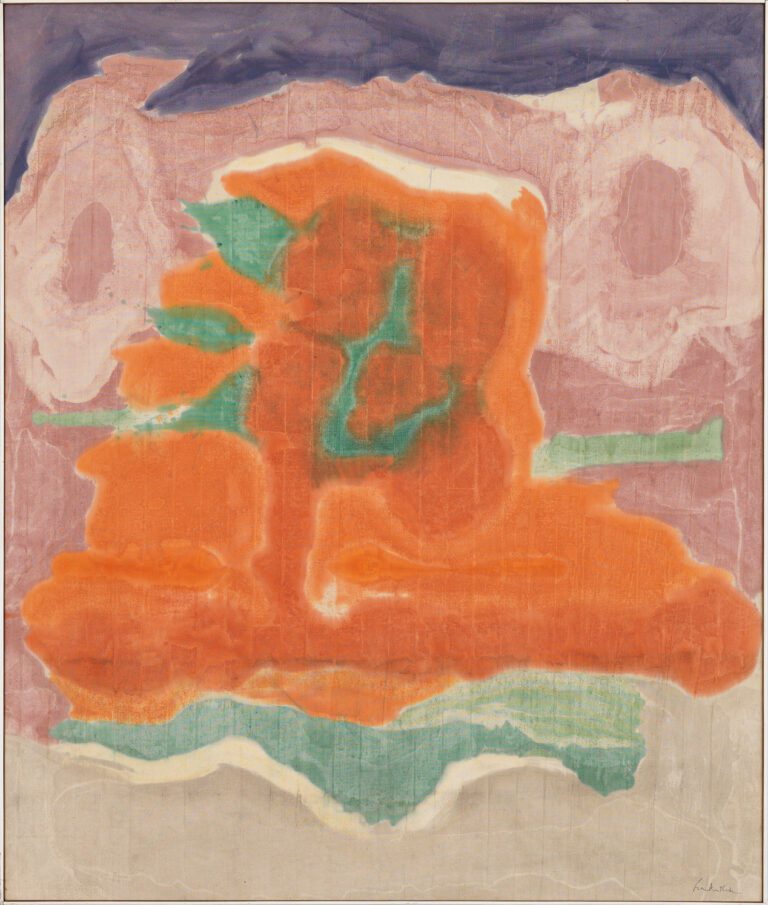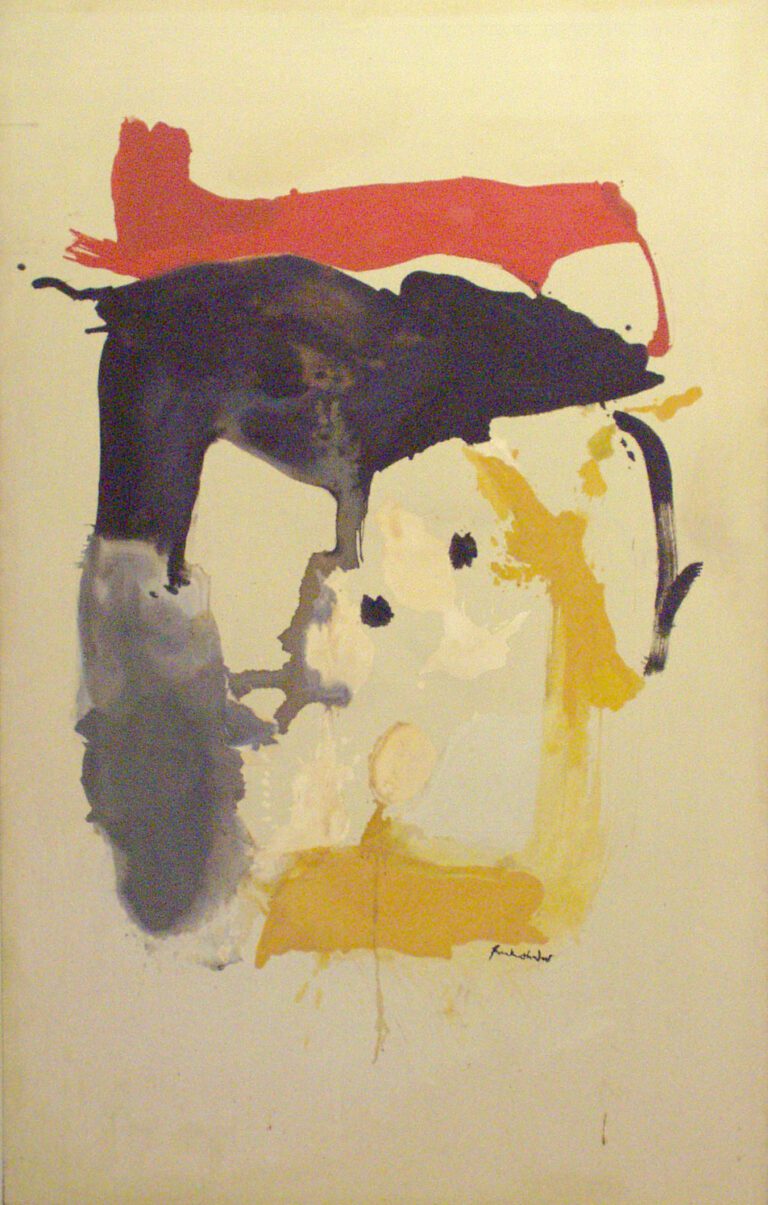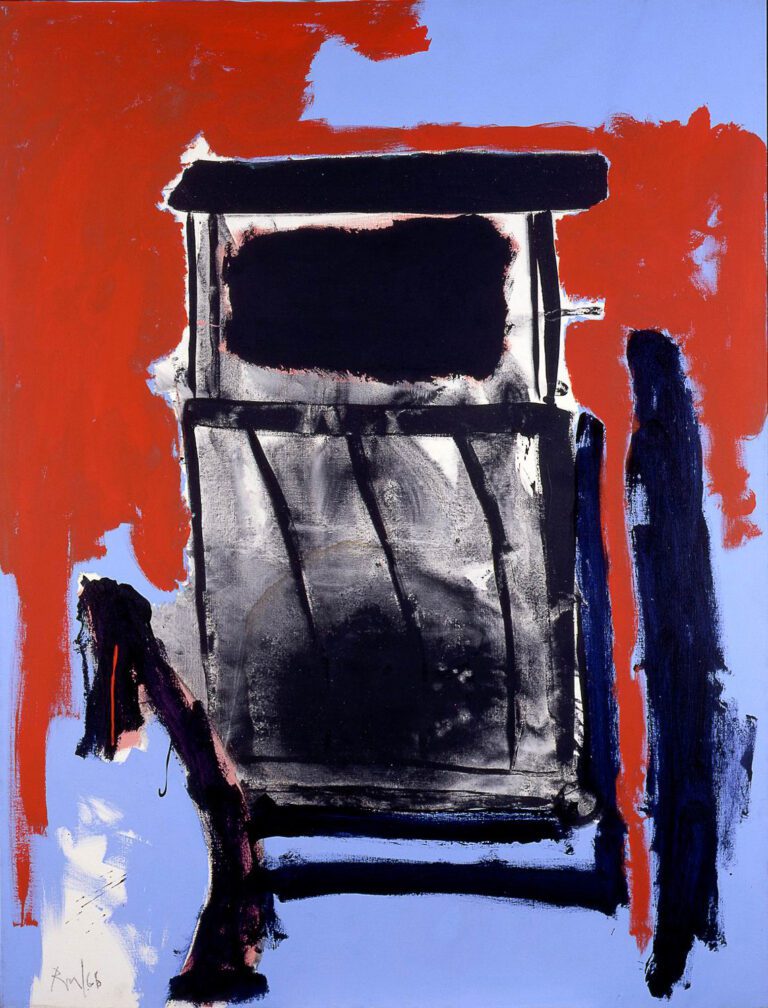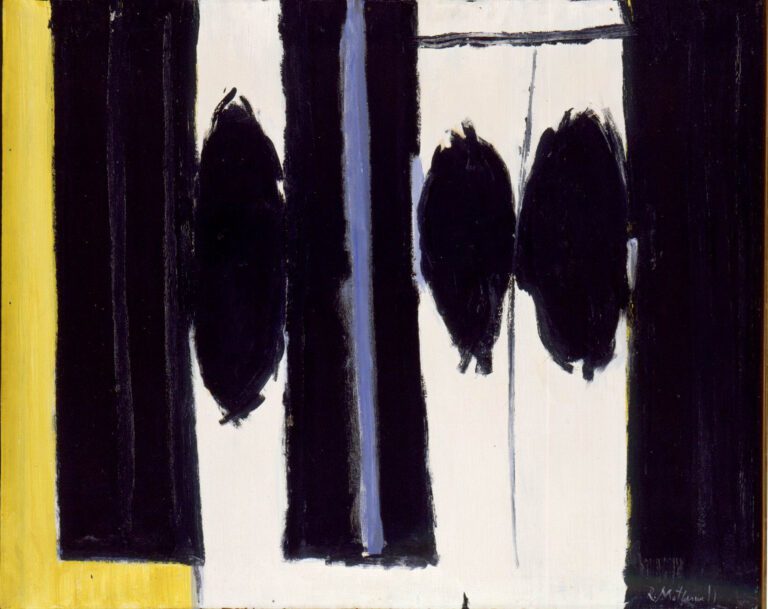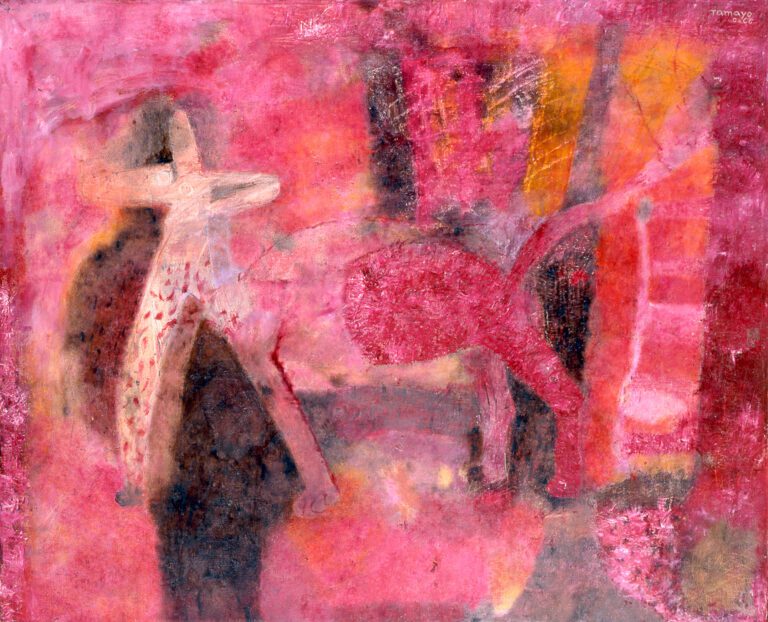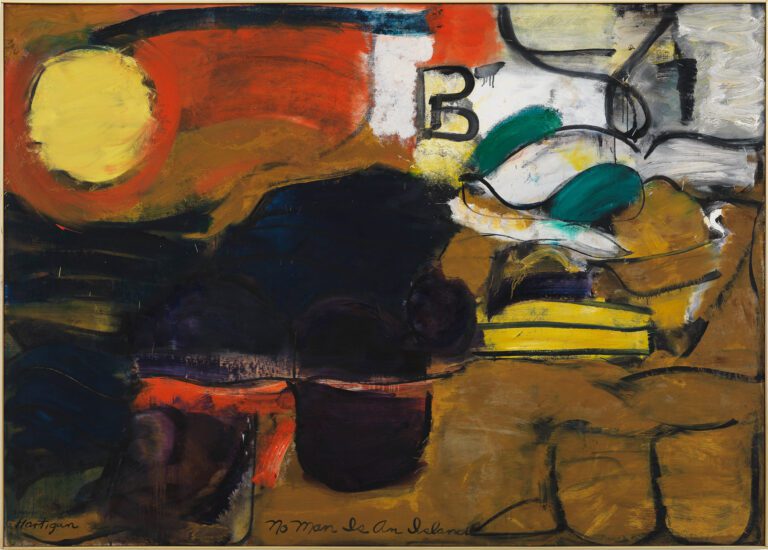In the early 1950s, Helen Frankenthaler met many of the Abstract Expressionists who were active in New York, her hometown, as well as the influential art critic Clement Greenberg. She married fellow abstract painter Robert Motherwell in 1958, and had her first museum retrospective at the Jewish Museum in 1960.
In 1951, Frankenthaler accompanied Greenberg on a visit to Pollock’s studio. Inspired by his practice of working with his whole body with a drip-and-pour method on unprimed canvases, Frankenthaler developed her own innovative technique, known as “soak-stain.” As Frankenthaler put it, “I am involved in making pictures ‘hold’ an explosive gesture, something that is moving in and out of landscape-like depths but lies flat in local areas – intact but not confined.” Abandoning traditional brushstrokes, she poured paint that had been diluted onto raw canvas, allowing it to soak in and spread in blots and stains across the rough-textured surface. She then used brushes and other tools to give direction to the translucent paints. Water-soluble acrylic gave her more control over the saturation of her fields of color. “. . .One really beautiful wrist motion that is synchronized with your head and heart, and you have it,” she once said of her work. “. . .It looks as if it was born in a minute.”
Frankenthaler’s technique influenced several other artists, including, perhaps most strongly, Morris Louis and Kenneth Noland, and created a bridge between the Abstract Expressionists of the 1950s and the Color Field painters of the 1960s. Her paintings’ simplification and large scale exemplify the new American style.
Grand Tour offers an expansive experience of a quasi-natural landscape. Applied with grand gestures, brown, taupe, and blue in various levels of dilution become earth, water, and sky. Frankenthaler brought her diaphanous forms to the very edge of the canvas, encouraging them to dissolve into, and intermingle with, one another. A red textural spot at the center might recall Monet’s Impression (Sunrise). The experience of the painting evokes transcendental awe.
Adina Kamien
